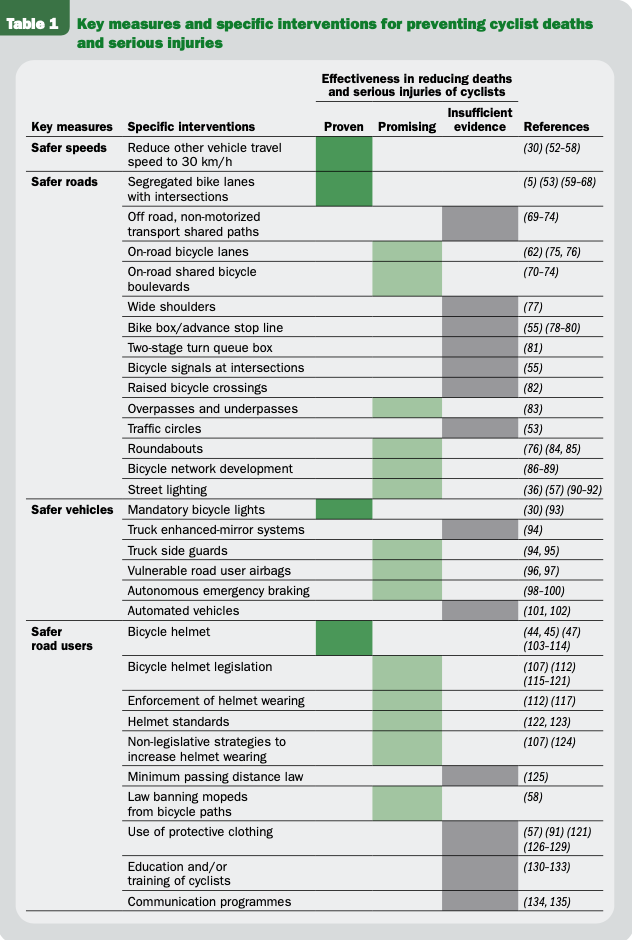- On this World Day of Remembrance for traffic victims, FABB wanted to highlight a recent document on best practices for cyclist safety.
- Key point is that cyclist crashes are predictable and preventable and should not be accepted as inevitable.
FABB encourages members and other traffic safety advocates to examine the World Health Organization’s recently published document, Cyclist Safety: An Information Resource for Decision-makers and Practitioners. It is a valuable collection of safety information and recommendations for solutions that need to be part of all discussions of regional transportation planning.
According to the WHO, every year 41,000 cyclists die in road traffic-related crashes worldwide, representing 3% of global road traffic deaths. Millions more people are injured in road traffic-related crashes while cycling, some of whom become permanently disabled. Worldwide efforts to shift more travel from motorized transport to the use of the sustainable mobility options of public transport, walking and cycling makes cyclists’ safety an essential component of road safety efforts.
Cyclist Safety not only describes the magnitude of cyclist death and injury but examines the key risk factors and effective safety measures. Cyclist safety measures are presented under the four broad and interrelated groups of safer speeds, safer roads, safer vehicles, and safer road users. While familiar to most advocates, the supported details and discussions are worth a careful review. For example, the document reports that bicycle network developments in the United States that provide cyclists with a continuous route without disruption have increased cyclist commuters in some cities by 1.5% and reduced bicycle injury crashes by significant margins. Networks of fully segregated, totally safe bike paths and 30 km/h speed limits in European cities have greatly reduced danger and eliminated fear as a barrier to cycling.

The document stresses the importance of a comprehensive, holistic approach that includes legislation, enforcement, and behavioral measures specifically for cyclists as well as integrating cyclist safety into overall road safety and transport strategies. It also draws attention to the benefits of cycling, which should be promoted as an important mode of transport given its potential to improve health and preserve the environment.
As we advocate for more and better bicycling, it is important policies that support an increase in the number of riders be accompanied by risk-reduction actions. And, improving cyclist safety requires a fundamental, system-wide approach with integrated land-use and transport planning that ensures accessibility using different modes of transport—as well as equity—in the allocation of road space and resources for transport systems.
Interested in helping FABB achieve these goals? Contact us at [email protected].
